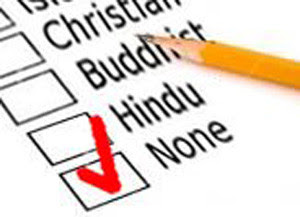Growing up in southern Ontario, my NFL team was
the Buffalo Bills. When I moved to Manitoba, I cheered for the Minnesota
Vikings. When I lived in Dallas, Texas, I rooted for the Cowboys.
It was the same for the CFL. Living close to
Toronto as a kid, I cheered for the Argos. After moving to Winnipeg, I became a
Bombers fan. In the NHL, it was first the Leafs, followed by the Jets.
My sports allegiances, in other words, weren’t
fixed—they were fluid. Who I cheered for depended on when I was asked and where
I lived.
What’s true for sports might also be true for
religious affiliation, according to Michael Hout, a professor of sociology at
New York University.
In an article published in March titled Religious Ambivalence, Liminality, and the Increase of No Religious Preference in theUnited States, 2006-2014, in the Journal for the Scientific Study
of Religion, Hout suggests that religious preferences are also not as fixed as
some might think.
This is especially true for the growing number
of people who identify as nones, people who, when asked in surveys if they
identify with a religious group, check the box that says “none.”
With about 20 percent of Americans saying they
have no religious affiliation, and about 24 percent of people in Canada saying
the same thing, their growing numbers suggest that religion in both countries
is in serious trouble.
But Hout says we may be drawing the wrong
conclusions from the data.
Most surveys that ask about religious
affiliation, he says, are binary in nature—people are asked if they are in or
out at one particular moment in time.
But after checking longitudinal results from
the U.S. General Social Survey, which checked religious affiliation three times
over a period of six years, Hout discovered that religious affiliation is not
an immutable thing.
While some of the respondents were consistently
in the nones camp at each point, others changed their minds and identified with
a faith group.
Hout’s conclusion? Although it’s true that Americans
are identifying less and less with organizated religion, these results show that
nones are “not consistently nonreligious.”
Based on his research, Hout concludes that 70
percent of Americans are consistently religious, ten percent are consistently
non-religious, and 20 percent are in-between.
He calls these people “liminals,” taken from
the Latin word limin, which means
threshold. They are literally on the fence between affiliating or not
affiliating with religious groups—they could go either way.
The story of the past 25 years is that of a
move away from organized religion, he acknowledges, “but focusing on the net
change misses substantial flux that moves both toward and away from organized
religion.”
What about Canada? Studies in this country also
show that many of the non-affiliated continue to be open to religious
belief—they believe in God and pray.
They are what University of Lethbridge sociologist Reginald
Bibby calls the “ambivalent middle,” people who could go either way when it
comes to identifying with religious groups.
Like in the
U.S., many of these people “haven’t slammed the door on possible religious
involvement,” Bibby told me a few years ago.
While not
everyone who is a none is interested in being part of a faith group, “it does
mean significant numbers of Canadians haven’t said a final goodbye to religion,”
he stated.
A question that might come to mind, then, is: If some liminal people might
be willing to identify with religious groups, what might attract them—and what
might keep them away?
According to an Angus Reid study, 42 percent of Canadians who are
ambivalent about religion say they would be open to greater involvement with
religious groups if it met their personal needs.
As for what pushes them away, a study in the U.S. found that about half of
nones mentioned the gulf between science and what their faith groups teach as a
reason for leaving.
Other reasons included a dislike for the hierarchical nature of some
religious groups, and the way some groups view LGBTQ people. The latter was
especially true for younger liminals.
If that’s the case, maybe nones aren’t the only ones on the fence;
religious groups may have some decisions to make, too.

No comments:
Post a Comment